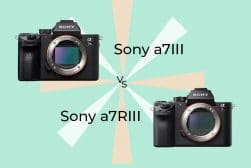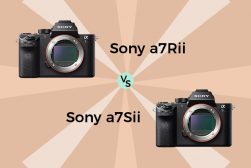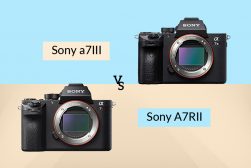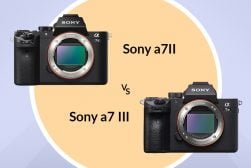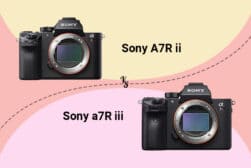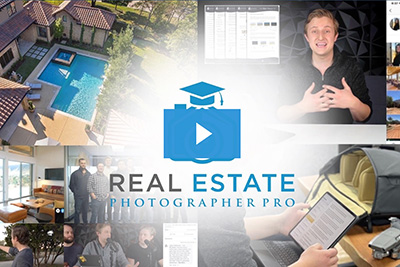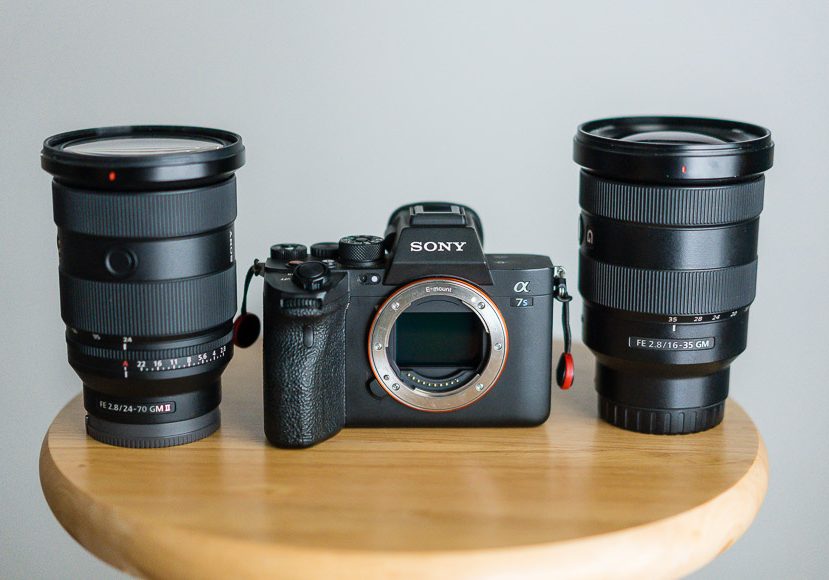
Best Lenses for Sony a7s III in 2023
It may not be the latest from Sony, but the a7s III is still a powerhouse of a mirrorless camera that can really sing with the right e-mount FE lenses.
Today I’m going to cover the best lenses to pair with your Sony A7S III.
Three years after its release, the A7S III still stands as one of the best hybrid photo/video cameras on the market.
I’m a big fan of the Sony A7SIII because of its combination of photo and video specs.
It can capture very clean high iso images in amazingly low light as well as shoot 4k video at 120fps without a crop.
The functionality of this camera was a big step forward for many Sony E mount camera users.
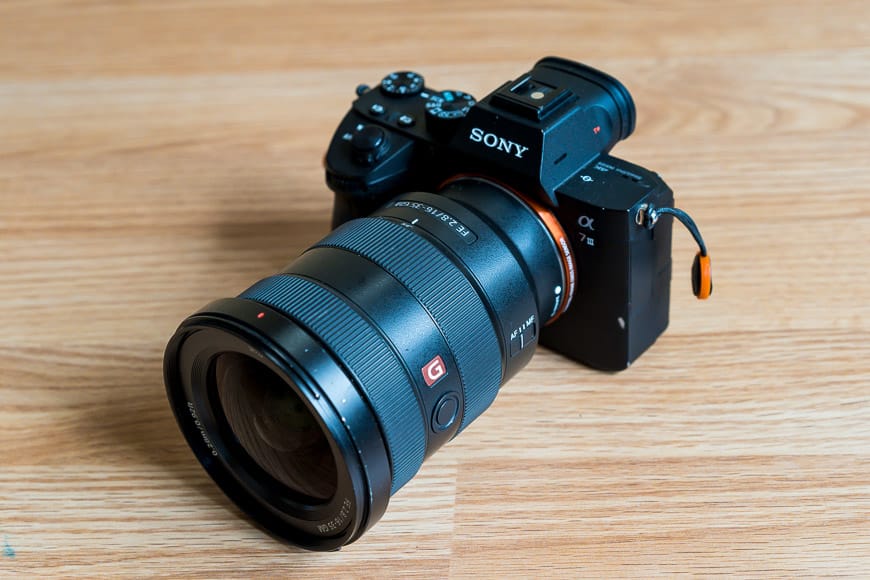

Versatile focal range with solid build, incredible image quality, and a fast constant aperture.
The only thing missing from your Sony A7S III camera body is a sharp piece of glass to create the image you visualized in your mind.
Read on below for what I think are the top lenses to get the most out of this amazing camera.
What are the Best Lenses for Sony a7sIII in 2023?
1. Sony FE 16-35mm f/2.8 GM

Stabilized: No
Weight: 680 g (24 oz.)
Size (Diameter x Length): 3.5 x 4.8″ / 89 x 122 mm
Filter Diameter: 82mm
Minimum Focusing Distance: 0.28m (11 in)
First up, my favorite lens to pair with the Sony A7S III, is the Sony 16-35mm f/2.8 GM.
It is one of the classic ultra wide angle lenses that have become a favorite of many photographers and videographers for its wide yet flexible focal range.
At 35mm you can shoot in a documentary style, and at 16mm you can capture wide angle landscapes.
Even though it’s a wide angle zoom lens I do my best to be intentional about the focal length I’m shooting at by choosing to shoot at 16mm, 20mm, or 35mm.
For the untrained eye, those focal lengths may not feel very different, but when you really compare, 16mm looks much different than 35mm.
As much as I can, I opt to shoot closer to 35mm to keep the distortion to a minimum giving a more natural feel, but sometimes you just need a super wide view, making 16mm very nice to have.
This zoom lens is a rectilinear design, so you will have minimal distortion even at the widest focal length if you keep it level with the ground and avoid putting important subjects near the edges of the frame.
In addition to the focal length variety, the Sony 16-35mm f/2.8 zoom lens is very sharp throughout the aperture range and produces excellent image quality. Chromatic aberration and distortion are very well controlled throughout the zoom range.
In terms of build quality, this lens for Sony A7S III camera bodies is solid. It has a metal barrel with nice feeling rubber around the zoom & focus rings.
I have dropped it on two occasions, and it has held up to the abuse very well. A great lens considering the other lenses I’ve dropped didn’t hold up as well.
The only time I have experienced any trouble is when heavy rain gets between the lens and the camera body. It is weather sealed, but I don’t recommend taking photos in heavy rain.
As you would expect from a top-quality G-Master lens (Sony E mount’s highest designation of quality), this lens is impressive in almost every specification.
In the past, I was initially unsure about the lens flare on this lens, but over time I’ve come to like it.
It can create a cool circle effect when shooting directly toward the sun, but otherwise, it is well-controlled.
All specs aside, this zoom lens is one of my favorites because of the style of images and video I can capture with it. The wide view is one of my favorites, and I think you will love it too.
If you don’t have one, I highly recommend the Sony 16-35mm f/2.8 for your Sony A7S III. It is a highly versatile lens that you will get a ton of use out of for photography and videography.
2. Sony FE 28mm f/2
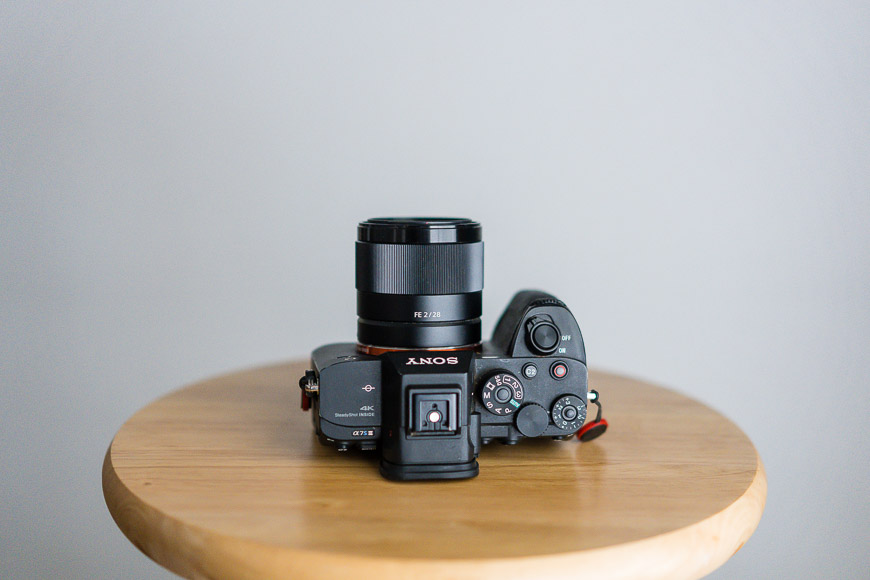
Stabilized: No
Weight: 200 g (7 oz)
Size (Diameter x Length): 2.5 x 2.4″ / 64 x 60 mm
Filter Diameter: 49mm
Minimum Focusing Distance: 0.29m (11.4 in)
Coming up as one of my second favorite lenses for the Sony A7S III is the Sony 28mm f/2.
This is a fast, compact prime with a very friendly price tag.
Released in 2015 when the Sony E mount was just starting to get a foothold in the market, it is an older lens that still has superb image quality, especially for the price.
I initially bought this lens for a review article but came to appreciate how it could be an inexpensive backup to my trusty Sony 16-35mm f/2.8.
It is in the middle of the focal range and I can keep it in my bag without having to buy another expensive lens as a backup.
My favorite feature about the Sony 28mm f/2, aside from the affordable pricetag, is how compact and lightweight it is. It has been stripped down to have no manual controls on the lens besides a focus ring but this makes it extremely compact and lightweight.
The 28mm is a close second to the 35mm among street photography enthusiasts and photojournalists. It’s a nice focal range, and I find it more versatile than the 35mm when shooting indoors.
It is especially compact, which also makes it less intimidating for photographing people because you’re not using a “big camera.” This is why people love it for street photography.
For the price, this lens offers excellent performance. The wide f/2 aperture makes shooting fast moving subjects in low light very doable.
Don’t expect a lot of bokeh with this lens simply because of its wide angle lens perspective, but it does offer some background separation if your subject is close to the camera.
The Sony 28mm f/2 is sharp, especially in the middle of the frame but does fade toward the edges of the frame at the widest apertures. It isn’t the sharpest lens in my bag, but still feels very useful, especially when compared to a cheap kit lens.
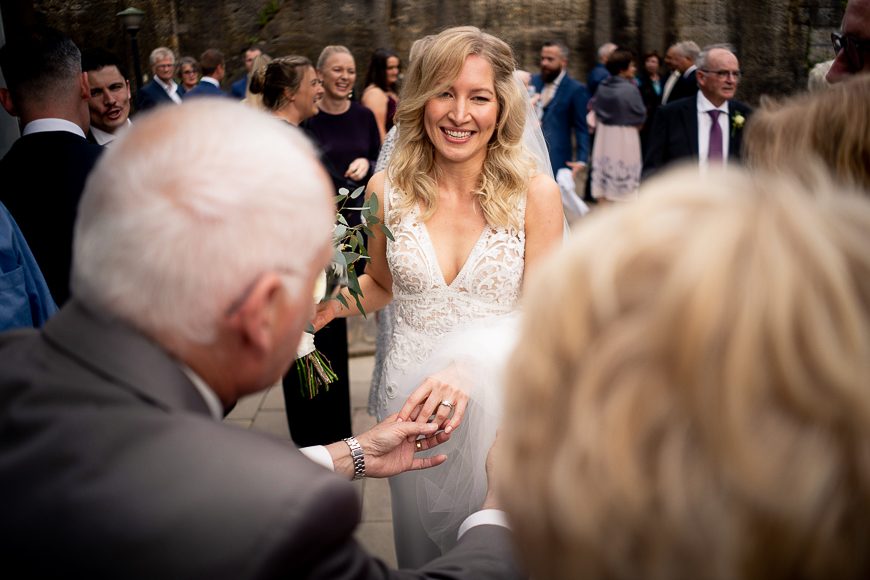
Using the Sony 20mm f/2 forces you right into the action for a more engaging photo.
Paired with the impressive auto focus of the Sony A7 SIII, this lens will produce sharp images quickly and silently. Even though it’s an older lens, it has no trouble keeping up with the latest camera bodies.
If you really dig into the specs of this lens, you may start to focus on the flaws but I assure you that if you try it, you’ll enjoy it. The compact nature and minimalist nature of this lens will not disappoint.
Additionally, because the Sony A7S III doesn’t create as high-resolution images as other Sony cameras, the imperfections are not as troublesome.
Shooting handheld video with this lens is also nice because it is so lightweight. It will easily balance on the smallest gimbals and stabilizers.
If you need a medium-wide lens, the Sony 28mm f/2 is a great buy. It could be a backup or a cheap alternative to more expensive lenses in your kit.
The Sony 28mm f/2 will teach you to zoom with your feet and give you a good feel for the ever-popular 24-35mm focal range.
3. Sony FE 35mm f/1.8
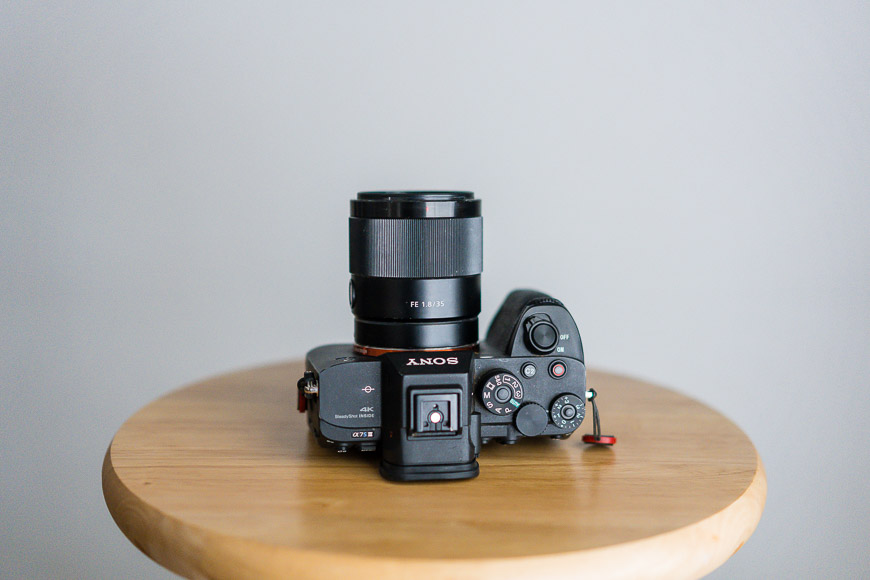
Stabilized: No
Weight: 281 g (9.9 oz)
Size (Diameter x Length): 2.6 x 2.9″ / 66 x 73 mm
Filter Diameter: 55mm
Minimum Focusing Distance: 0.22m (8.7 in)
If you want a step up from the above lens, try out the Sony 35mm f/1.8. While it is only a little narrower in focal length, it is definitely a step up in terms of quality and features.
As a professional photographer, this lens starts the day on my camera at almost every shoot. It is fast, sharp, and very compact. I find the Sony 35mm f/1.8 to be one of the most versatile prime lenses.
If I could only have one lens, this would be it. It is especially well suited to variable situations like street photography or events.
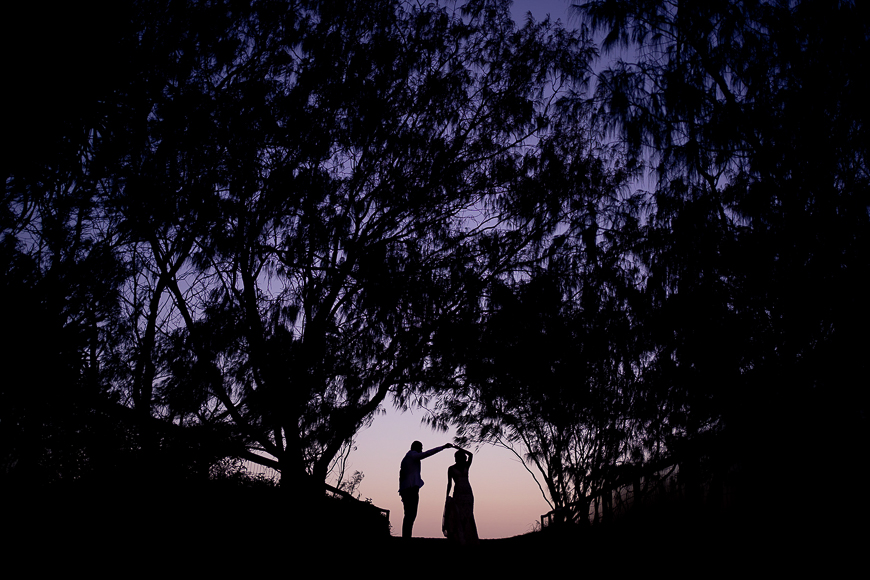
The Sony 35mm f/1.8 is remarkably sharp, and offers a versatile field of view.
First off, this lens is an excellent balance of size/weight for the Sony A7S III camera body. I knew when it was released that it would become a staple in my kit.
With a wide maximum aperture of f/1.8, it excels in low light but is much more compact than an f/1.4 or f/1.2 lens.
When I have to carry my bag up a mountain, the difference between carrying ultra-fast lenses like the Sony 50mm f/1.2 and an f/1.8 version is significant. My bank account also appreciates the slightly narrower aperture lenses.
With close subjects, this lens will produce a nicely blurred backdrop and give you the separation/bokeh you expect from a high image quality, low aperture lens.
The sharpness of this lens is excellent. The only time you might notice some loss of sharpness is toward the edges of the frame when shooting wide open. This isn’t really a problem since the majority of subjects won’t be at the outer edges of the frame.
Coming in at my favorite focal length of 35mm, this lens can shoot a distortion-free portrait or a wider scene if you move further back. It’s a flexible focal length and has enabled me to produce a huge variety of images.
I highly recommend checking out the Sony 35mm f/1.8 lens because of its utility and image quality!
4. Sony FE 55mm f/1.8
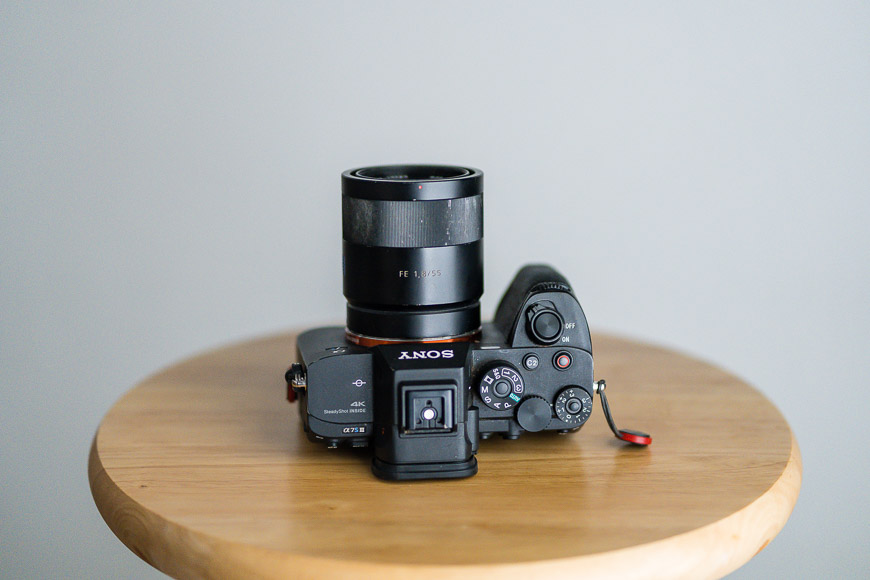
Stabilized: No
Weight: 281 g (9.9 oz)
Size (Diameter x Length): 2.5 x 2.8″ / 65 x 71 mm
Filter Diameter: 49mm
Minimum Focusing Distance: 0.5m (1.64 ft)
Most photographers will want to have a ~50mm lens in their bag because it is one of the most commonly used focal lengths.
If you want a lens to pair with the Sony A7S III, definitely check out the Sony 55mm f/1.8.
It is inexpensive, very compact/lightweight, and super sharp. Across the entire frame, this lens is much sharper than many of the zoom lenses I’ve used and is a versatile focal length.
At under 10 oz (281g), the Sony 55mm f/1.8 is very nicely balanced on the Sony A7S III and works really well as a video lens. I love how easily this combination tucks into bags or even a jacket pocket.
This lens is so sleek that you might even mistake a bag for being empty because it is so lightweight.
I primarily use this lens when I want a little more subject isolation than the Sony 35mm f/1.8 can provide. It takes excellent full length portraits, and you can get in close to isolate details.
The Sony 55mm f/1.8 has excellent bokeh when shot wide open. It can be used to pull focus from one subject to another to draw the eye in a video.
Although the aperture isn’t as wide as the Sony 50mm f/1.2, it does surprisingly well at blurring the backdrop.
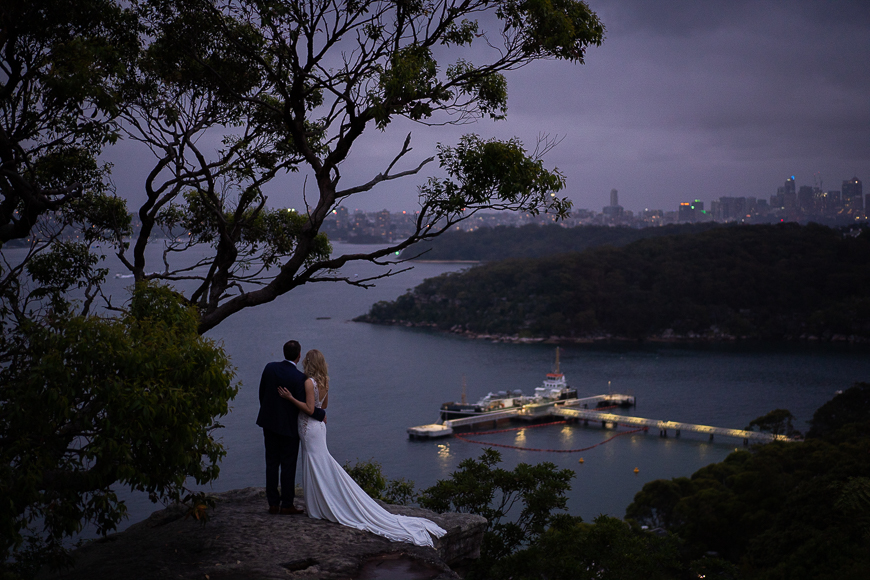
55mm is a great focal length for including some surroundings while also giving natural compression to an image.
My other favorite aspect of this lens is the color and contrast that really accentuate how sharp it is – it’s the sharpest Sony e-mount lens I’ve ever used.
The crisp image quality really shines. Over time, you will begin to recognize that each lens has a different feel, and I have come to love the character of the Sony 55mm f/1.8.
The Sony 55mm f/1.8 allows you to narrow in on the important things in an image without it being as confining as a telephoto lens.
Hopefully, by now, I’ve convinced you that this lens is a top performer among the mid-range prime lenses. If you don’t have a 50mm lens, definitely check this one out for your Sony A7S III.
5. Sony FE 85mm f/1.8

Stabilized: No
Weight: 371 g (13.1 oz)
Size (Diameter x Length): 3.1 x 3.2″ / 78 x 82 mm
Filter Diameter: 67mm
Minimum Focusing Distance: 0.8m (2.62 ft)
As my first lens in the telephoto category for the Sony A7S III, the Sony 85mm f/1.8 is one of my top choices. Like many of the other lenses in this article, it is fast, lightweight, and compact.
For anyone who takes portraits, an 85mm lens is essential. The Sony 85mm f/1.8 is my choice for the best portrait lens for the Sony A7S III. It also works great for filming people because of its naturally flattering focal length.
Most of the lenses in this article will have a bigger, more expensive G-Master lens that is higher performance but I tend to opt for the cheaper alternative.
In this case, the Sony 85mm f/1.4 GM lens is nearly triple the price but only a 2/3 of a stop faster in aperture. That’s the difference between 1/60 vs 1/100 shutter speed, a minimal difference in my opinion.
Additionally, many people will be keeping their shutter speed at a specific setting for getting cinematic results (double the video frame rate).
Sure, if you want the best and the price is no concern, go for the best. The image quality will be superb but you will also have a much bigger/heavier lens to carry around.
In comparison, the Sony 85mm f/1.8 is an excellent lens that is cheaper and almost as good. In my experience, the images are tack sharp, the color rendition is excellent, and it is small enough that you won’t hesitate to bring it in your backpack.
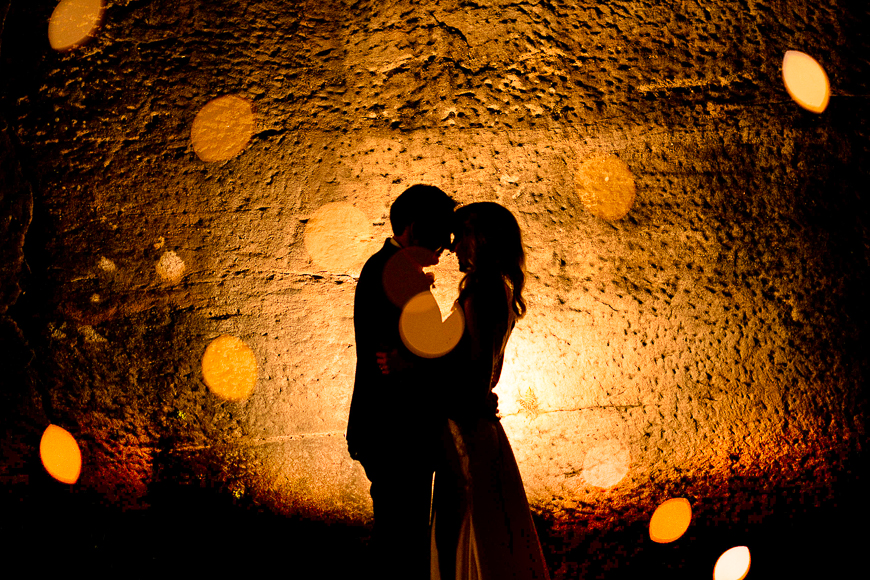
When shot at f/1.8, ths Sony 85mm produces some great bokeh.
This lens also completes my prime trio of 35mm, 55mm, and 85mm. Each has a distinct look and feel that helps me create a certain type of image.
Additionally, I often use this lens for compression in a landscape. It allows you to make the subject feel closer to the background.
When shooting video, it can also do a great job at smoothly pulling focus through the frame.
The Sony A7S III focus speed can be turned down if you like a slow smooth transition from one subject to another with just the tap of the back screen. You can also turn the zoom ring to get snappy manual focus performance.
Last but not least, the bokeh of this lens is why most people reach for it. I love this portrait lens when capturing images with city lights in the background.
Those lights will turn into beautiful blurry bokeh backdrops that are classic in so many Hollywood scenes.
When shooting wide open at f/1.8 with this lens, the background falls nicely out of focus, drawing your attention to the subject.
When shooting portraits, I love the fast autofocus of this lens when paired with the eye-autofocus tracking of the Sony A7S III. It locks onto an eye or face and always nails the sharpness.
This lens comes with a focus hold button that many people like to program to the eye AF on their Sony camera. It will lock on to your subject and track as you reframe your photo or record video.
As a photographer or videographer of people, the Sony 85mm f/1.8 is an excellent addition to Sony A7S III!
6. Sony FE 24-70mm f/2.8 GM II

Stabilized: No
Weight: 695 g (1.5 lb)
Size (Diameter x Length): 3.5 x 4.7″ / 88 x 120 mm
Filter Diameter: 82mm
Minimum Focusing Distance: 0.2m (8.3 in)
For most photographers and videographers, a standard zoom lens will find a place in their kit. The Sony 24-70 f/2.8 GM II is my pick for a zoom lens to pair with the Sony A7S III.
This is the swiss army knife of lenses because of its focal length and zoom range. It can capture wide scenes and zoom to the telephoto range to capture wide, medium, and tight shots.
I especially love this lens for shooting in fast-paced environments where you don’t know exactly what will happen next.
Although most of the lenses in this article are on the cheaper end, this lens is not. It was recently re-designed by Sony and has the latest in optical performance.
I love this highly versatile lens because it is tack-sharp. If you have ever looked at the first generation version of this lens from Sony, you’ll notice the new one is significantly lighter and more compact – about 200 grams lighter in fact, making it the lightest weight zoom lens in its category from Sony.
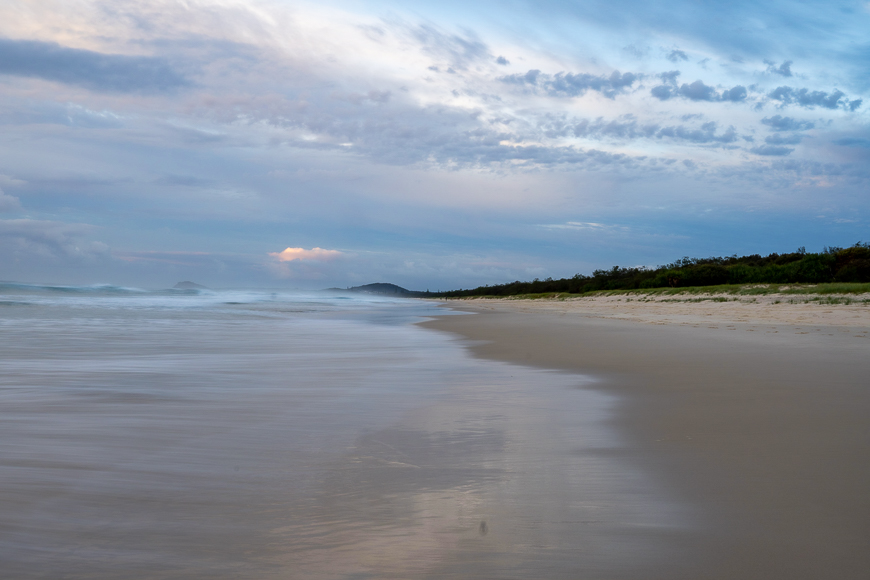
Being able to go from 24mm (above) to 70mm in one turn of the zoom barrel is incredibly useful.
A few other features to note about this high end zoom lens are its sharpness, image quality, zoom range, and fast autofocus. You’re always going to have to make some compromises when designing a zoom lens but this lens is one of the best on the market in this price range.
A mid range zoom is not a lens to cheap out on because the cheaper versions sacrifice a significant amount of quality, usually in sharpness. Sure, you’re paying over $2000 for this lens but it covers a wide variety of focal lengths.
You would be looking at at least three prime lenses to get the same coverage in the focal range. With that in mind, you should opt for the best quality with a zoom if you want to achieve similar sharpness to a prime lens.
Paired with the Sony A7S III, the 24-70mm is a workhorse. It can capture a wide variety of shots, all with a quick rotation of the zoom ring. I find this video lens especially useful when shooting because I can get a different shot without having to re-balance my gimbal after changing lenses.
The build quality of this lens is top notch, something you would expect from a lens released in 2022.
It has all the features you can ask for in a lens: smooth zoom ring, quality focus ring, aperture ring, af/mf switch, focus hold button, and even an aperture de-clicking switch. The lens hood also comes with a small opening to adjust a polarizing filter.
This lens is also great if you expect to shoot in environments where changing lenses would be unwise. For example, if you’re shooting from a moving vehicle or if there is a lot of dust/rain/snow.
If you’re on a tighter budget, there’s an f/4 version of this focal length from Sony (see my review of the Sony 24-70mm f/4), which offers great sharpness and decent overall performance in a lighter package, but there’s simply no denying it – the f/2.8 is better in every way.
This lens is excellent and is clearly the king of the 24-70 focal length aka, the best zoom lens for Sony.
It will deliver outstanding image quality throughout the zoom range.
Over the past few years, the mid-range zoom lens has become a crowded field with offerings from Sigma, Samyang, and Tamron, but the Sony 24-70 f/2.8 GM II is definitely the best when it comes to quality!
7. Sony FE 70-200mm f/2.8 GM
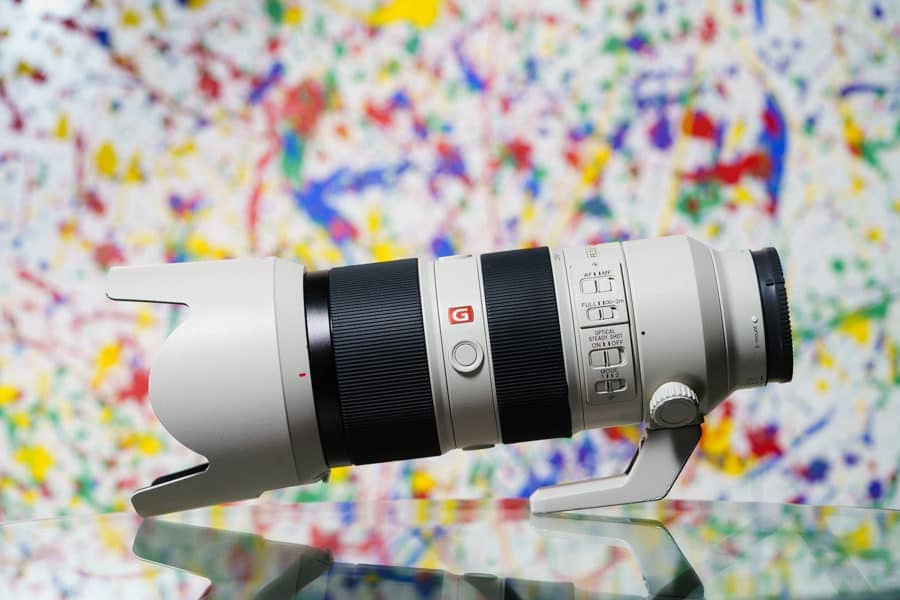
Credit: Chad Winstead
Stabilized: Yes
Weight: 1480g (52.21oz)
Size (Diameter x Length): 3.5 x 7.9″ / 88 x 200 mm
Filter Diameter: 77mm
Minimum Focusinging Distance: 0.96m (3.15 ft)
Last but not least is the Sony 70-200mm f/2.8. This is also a workhorse lens and completes the ‘holy trinity of zoom lenses’ – the 16-35, 24-70, and 700-200.
That ‘trinity’ covers a focal length from 16-20, that allows you to create almost any type of image.
Many photographers swear by this trifecta of lenses. I tend to opt for prime lenses in wider focal lengths, but a 70-200mm lens has been a fixture in my camera bag for over a decade because of its zoom range.
Boasting outstanding image quality, his lens delivers top image quality throughout the zoom range and focal lengths. The image quality is on par with a prime lens even though the focal length covers a wide zoom range.
The Sony 70-200mm f/2.8 lens excels as a portrait lens in the 70-100mm focal length. At 200mm, it creates awesome compression, giving the feeling that faraway backdrops are right behind your subject. I find this especially useful when capturing action sports in the mountains.
For videography, this lens is excellent to isolate a subject or reach out to a distant scene. The zoom range is flexible, but the farthest focal length of 200mm will allow you to capture a very narrow scene.
It also has optical image stabilization that makes your video much more stable. When combined with the in body stabilization of the Sony A7S III, this is a powerful combination.
Many of the lenses in this article don’t have optical image stabilization and rely on a low aperture to get sharp photos however, when it comes to shooting video, having optical image stabilization makes a big improvement in getting steady shots.
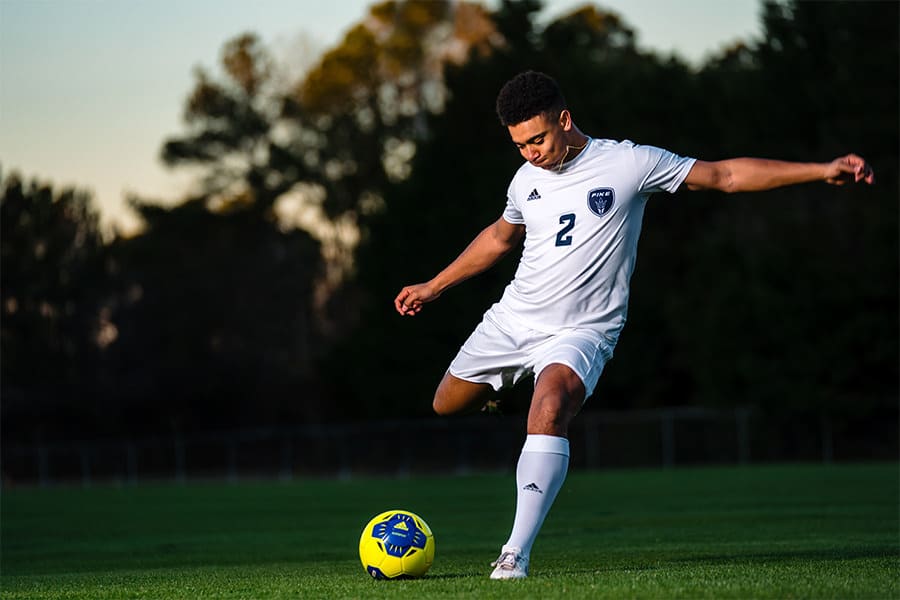
A 70-200mm lens is a staple for any sports photographer. Credit: Chad Winstead
Additionally, the minimum aperture of this telephoto lens is f/2.8 which is great for isolating subjects against the backdrop. Even at the minimum aperture, this lens is especially sharp making your subject pop.
(It also works great as a lens for the Sony a7R IV, a camera with over twice the resolution as the a7s iii)
This telephoto lens is fully featured, offering a selectable focus range, optical image stabilization mode selection, auto/manual focus switch, and a focus hold button! The zoom/focus rings also feel smooth but stable.
Paired with the compact and lightweight Sony A7S III, this lens is on the heavier side but it comes with a tripod ring that will help balance it when you’re using a fluid head or tripod.
If you want a cheaper telephoto lens alternative, the Sony 70-200 f/4 is an older lens but still offers excellent quality.
The main sacrifice is a full stop of light at the minimum aperture of f/4 vs f/2.8, so if you ever want to shoot indoors with a 70-200, I’d opt for the faster lens. If weight savings is your priority, the 70-200 f/4 may be a better choice.
At under $2000, the Sony 70-200 f/2.8 GM is an incredible lens. Especially when paired with the Sony A7S III, it is one of the best telephoto lenses on the market!
Final Words on Lenses for the Sony a7s iii
Now that the Sony E Mount system has been out for over a decade, there are countless lenses to choose from.
Hopefully, this article has guided you to some great options when it comes to finding the best lens for your Sony A7S III.
I’m always seeking to find the best lenses on the market to make my job easier and faster. You can’t go wrong with any of the lenses offered by Sony, but hopefully, you find my recommendations useful!
From a wide angle prime lens, to an ultra wide lens with a versatile zoom range, to a fantastic portrait lens, I hope you find the tools you need to create!
Aside from the two zoom lenses at the end, most of the lenses in this article were chosen to find a balance between quality and affordability. I also wanted to cover the best lens for each focal length.
They are high enough quality to be used by most professionals but won’t break the bank. If you decide to upgrade later, you can easily sell any of these lenses without losing much money.
- You may also like these articles: Best lenses for Sony a7 iv | Best lenses for Sony a6100
The most important thing to consider when choosing a lens is what it can do to fulfill your creative vision. Ask yourself: what do you want to create? and what is your style?
With the Sony E mount system, investing in quality lenses is often a wise choice. The camera body may become obsolete but the lenses will likely last many years.
I’d love to know what you think about the lenses for the Sony A7S III I chose and if you think there are any others that should be on the list. Leave a comment below, and I will get back to you!


Versatile focal range with solid build, incredible image quality, and a fast constant aperture.






